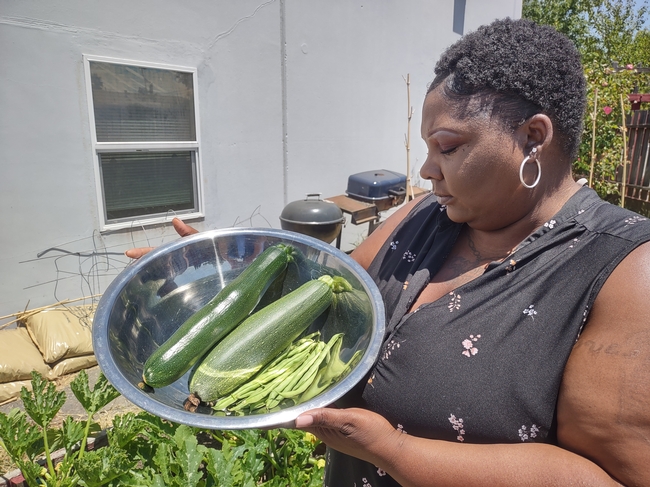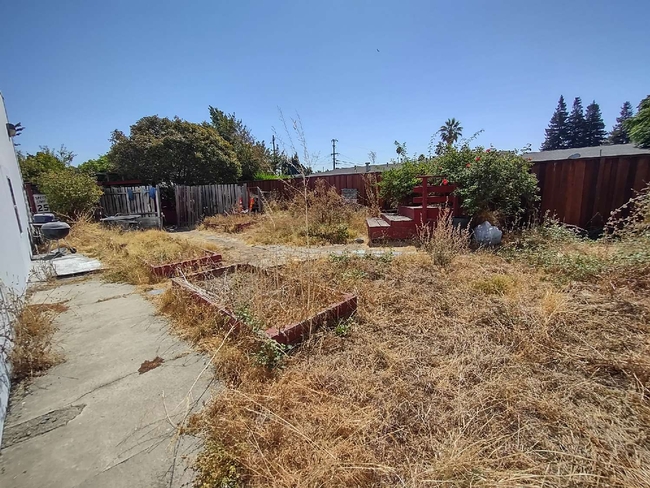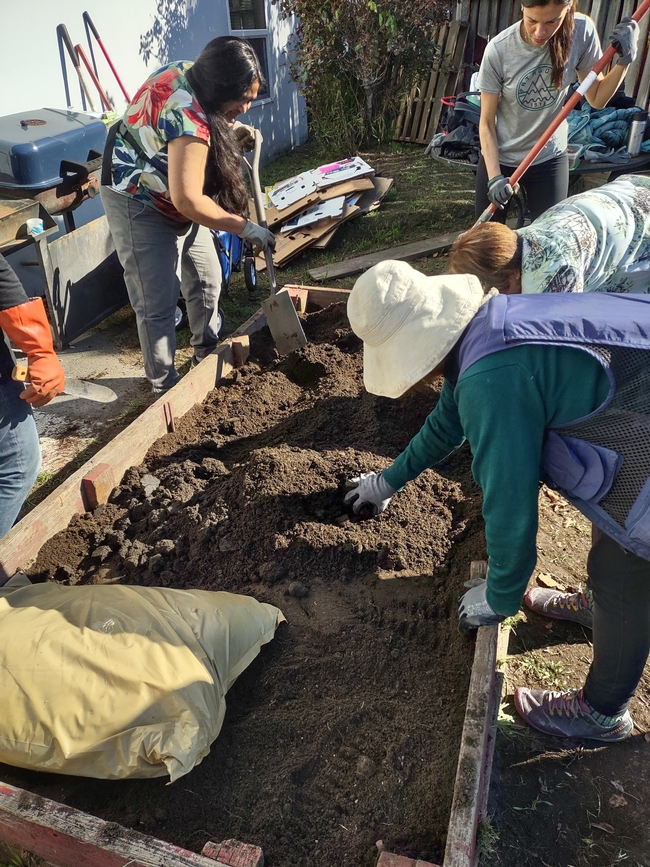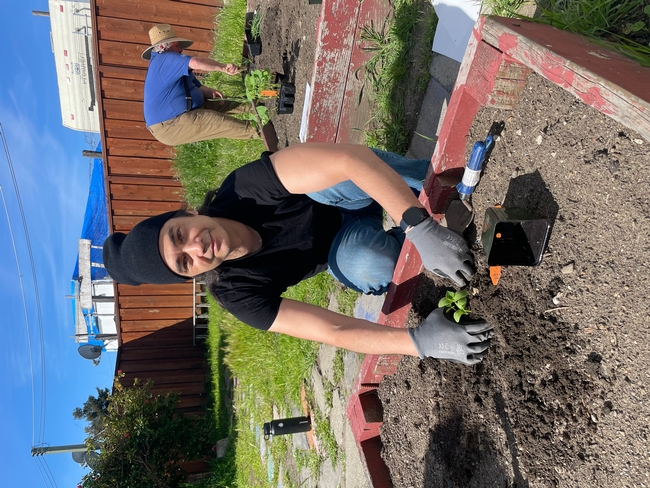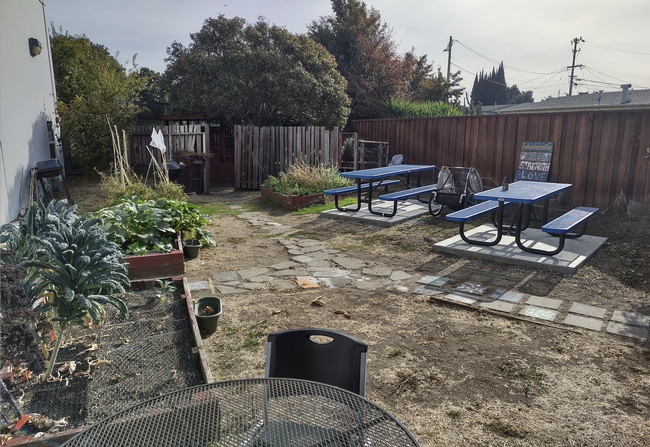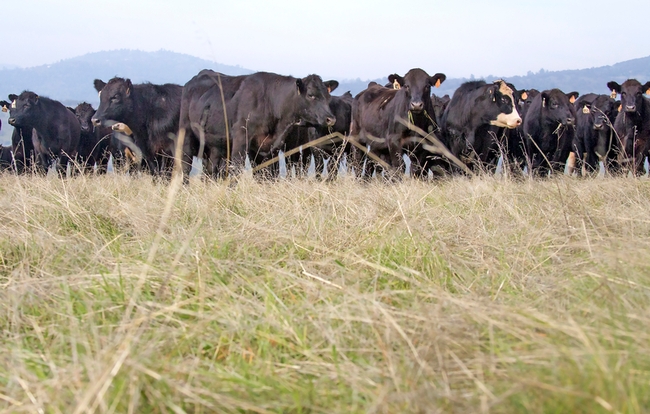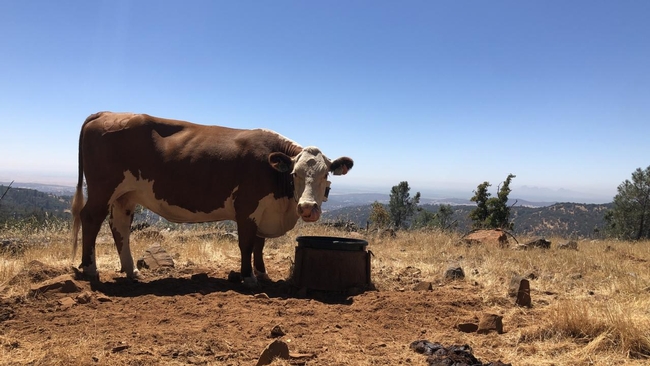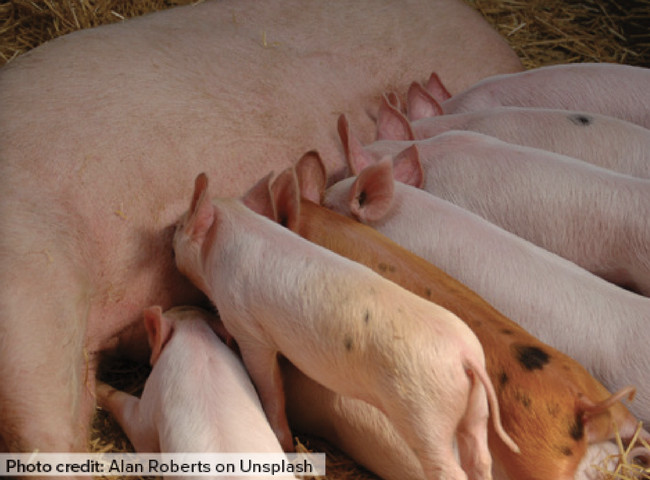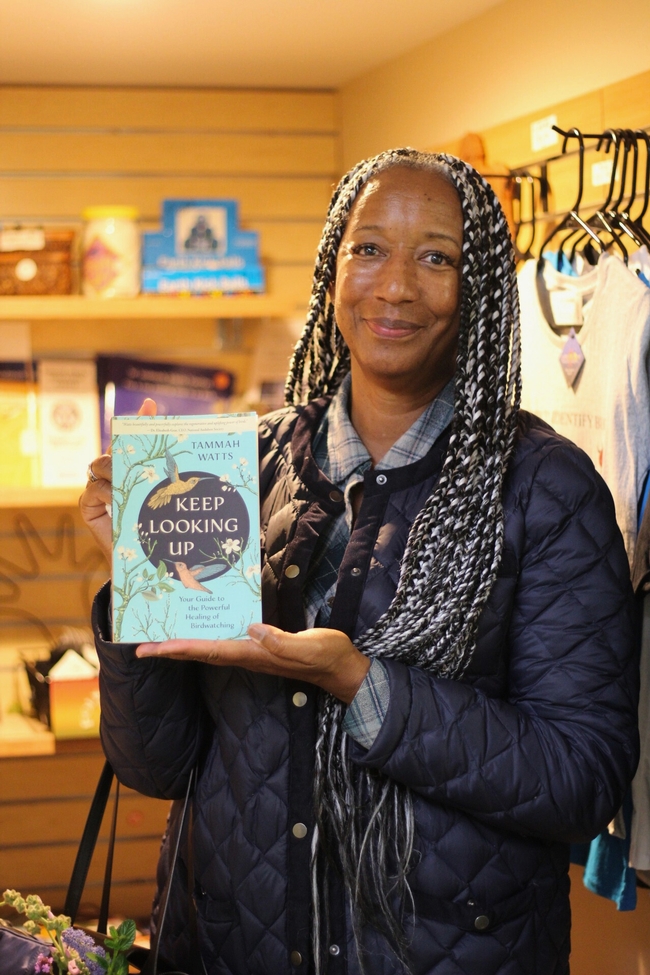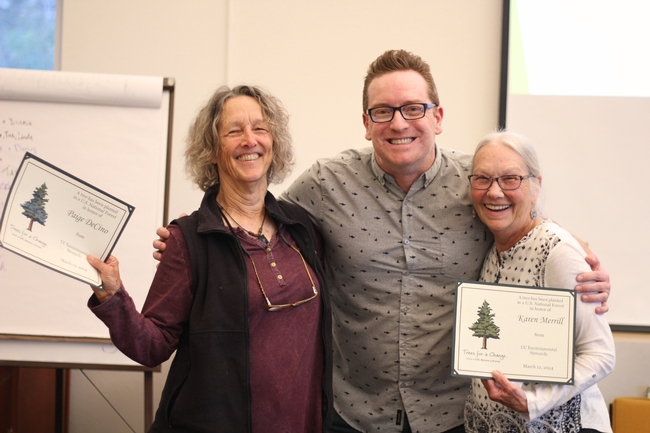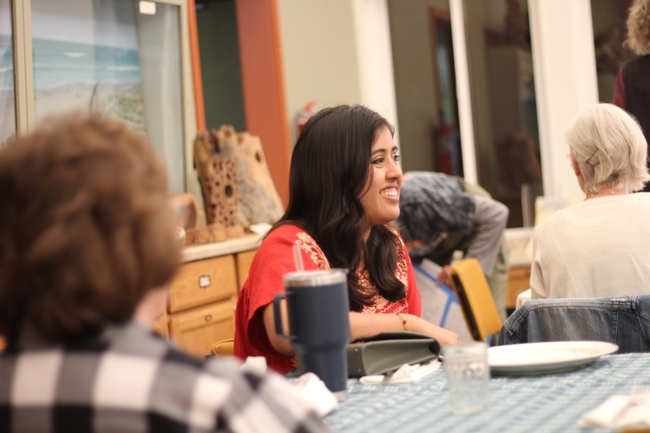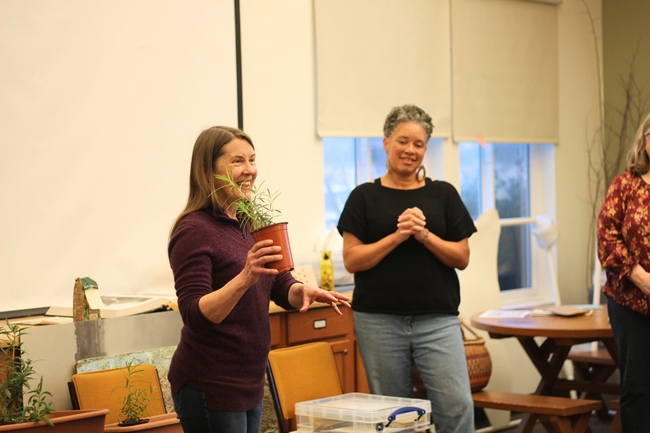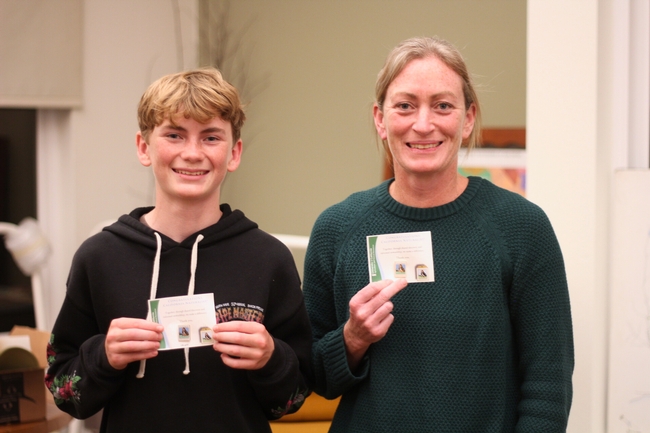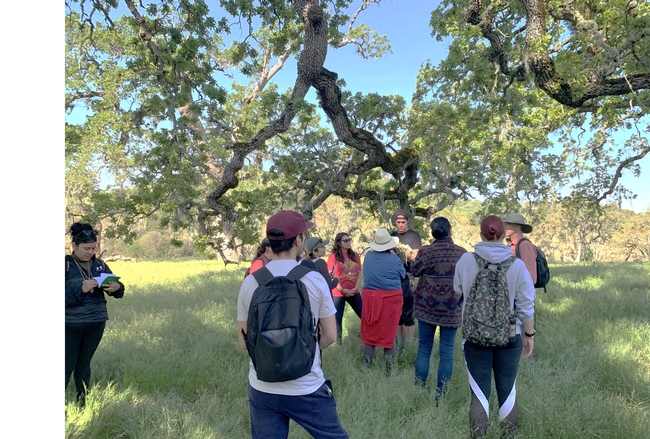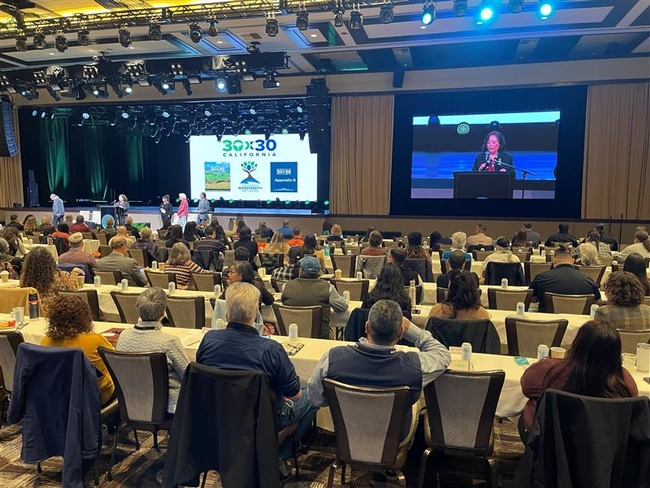News stories
Homeless people cultivate food, better health while gardening in Alameda County
Fresh fruits and vegetables are essential to a healthful diet, but it's hard to keep perishable foods on hand if one doesn't have a refrigerator or a home. To enhance the health of homeless people, the CalFresh Healthy Living, UC Cooperative Extension team in Alameda County has partnered with the South County Homeless Project to grow fresh produce for people staying at the emergency housing in Hayward.
For the past seven years, CalFresh Healthy Living, UCCE Alameda has been delivering nutrition lessons to residents of the South County Homeless Project, part of Building Opportunities for Self Sufficiency. The classes include Rethink Your Drink, Food Safety, Making Every Dollar Count, Eat Healthy Be Active Community Workshops, and Fresh from the Garden.
The South County Homeless Project facility houses 24 people for up to a year. With the help of the CalFresh Healthy Living, UC Cooperative Extension team, its existing garden was refurbished and redesigned. The large outdoor garden behind the facility offers therapeutic gardening opportunities to residents and provides food for their meals.
"I love the garden and when the cook cooks the vegetables, they taste amazing,” said one resident. “I am thankful for this garden and for having the CalFresh Healthy Living team.”
At one time, South County Homeless Project's backyard featured a flower garden. After years of neglect, weeds overtook the garden.
In 2022, CalFresh Healthy Living, UCCE Alameda proposed getting residents involved in growing food by resurrecting the garden with edible plants.
“Not only could we continue to engage residents in nutrition education classes, but we could also work together to reinvigorate their neglected garden,” said MaxFairbee, nutrition educator withCalFresh Healthy Living team,UCCE Alameda.
More than 15 varieties of herbs and vegetables planted
Residents and staff set out to replace the weedy beds with a vegetable and herb garden.
“We worked with South County staff and residents on the design, clean up, planting, harvesting and ultimately incorporating food from the garden into the kitchen for residents to enjoy the fruits of their labor,” Fairbee said.
For gardening expertise and support, Fairbee enlisted the UC Master Gardeners of Alameda County's Community Garden Team to help. While the CalFresh Healthy Living, UCCE staff continued providing nutrition classes, the UC Master Gardener volunteers trained the residents on the basics of gardening.
In April, after heavy rains, the group planted 50 seedlings, half donated by the UC Master Gardeners. They planted two varieties of lettuce,arugula, four varieties of tomatoes, zucchini, kale, onions, cucumbers, green beans, Swiss chard, kale, basil, cilantro, tarragon, thyme, parsley, rosemary, oregano and mint.
From garden to table
“In May, we harvested lettuce and in June, we harvested green beans, cucumbers, kale and onions,” Fairbee said.
The fresh vegetables and herbs were used to prepare salads, sandwiches and pasta dishes for the residents. Fairbee and the other educators have also used the fresh produce for cooking demonstrations and tastings as part of their Fresh from the Garden class.
"We have been able to use many of the veggies as sides or to go in the salad," said one of the South County Homeless Project cooks.
"One of the chefs used the zucchini in the pasta sauce, it was so good! I didn't really know you could use it that way!" said a resident.
After tasting summer squash andgazpacho made with tomatoes from the garden, a South County resident namedSelina said, "I was surprised how good the raw summer squash tasted and how the flavor was different after it was cooked. I'll definitely be adding more zucchini to my plate."
Challenges to keeping the garden going
To keep the garden healthy, they faced competition with plant-chewing snails, slugs and aphids and cats digging in the soil. Because the water source is over 200 feet from the garden, they run a long hose across the main path, along the parking lot to water the plants, then unhook the hose and stash it indoors after each use so that it won't get stolen.
Another challenge of maintaining the garden is getting enough residents and staff to volunteer to work on it.
“Although staff are supportive of the garden, none actually have time to work in the garden,” Fairbee said.
The residents harvest, wash and store the produce in the kitchen. Only four to six of the 24 residents are typically interested in working in the garden, pulling weeds and protecting the plants from pests – most are focused on getting a new job and a home. South County residents usually leave the temporary housing within a few months.
For more consistent garden maintenance, Fairbee is looking to other community groups for volunteers. He is also hoping to persuade the county government to install a water spigot close to the garden so they can install drip irrigation to water the garden.
“We'd like to work with the UC Master Food Preservers to teach residents how to preserve herbs and vegetables,” Fairbee said.
He hopes South County Homeless Project residents will continue gardening in their new homes to grow fresh vegetables so they can enjoy a more nutritious diet and better health.
Beyond the fresh food, the South County Homeless Project residents and staff enjoy the ambience of the garden.
"It's really nice to go back there and just sit, it's really peaceful," said one staff member.
A resident added, "(The garden) relaxes me from stress. I love the garden."
Understanding cattle grazing personalities may foster sustainable rangelands
Matching herds to landscape can support animal growth and ecological needs
Not all cattle are the same when it comes to grazing. Some like to wander while others prefer to stay close to water and rest areas.
Recognizing those personality differences could help ranchers select herds that best meet grazing needs on rangelands, leading to better animal health and environmental conditions, according to a new paper from the University of California, Davis, published in the journal Applied Animal Behaviour Science.
“Cattle can actually be beneficial for the rangelands,” said lead author Maggie Creamer, who recently earned her Ph.D. in animal behavior at UC Davis. “Vegetation in rangelands actually need these kinds of disturbances like grazing.”
Ranchers can add elements to the rangeland such as water, mineral supplements and fencing to influence where cattle graze, but little research has been done on how those efforts affect individual cows. Considering personalities could save money.
“If you're spending all this money to add a management tool in order to change the distribution of your animals, that's a huge cost to ranchers,” said Creamer. “Thinking about other tools, or selecting certain animals with these grazing traits, might be a better way to optimize the distribution on rangeland rather than spending a bunch of money for something that may ultimately not pan out for all your animals.”
Effects of grazing
Livestock graze on an estimated 56 million acres in California, and healthy rangelands host native vegetation and animals, foster nutrient cycling and support carbon sequestration.
Uneven grazing can degrade water quality, soil health and habitats. Optimizing grazing — including the even spread of cow pies — can improve the ecosystem while also reducing fuel loads for wildfires.
To better understand individual grazing patterns, researchers went to the UC Sierra Foothill Research and Extension Center in Browns Valley and tracked 50 pregnant Angus and Hereford beef cows fitted with GPS collars.
The research
The cattle, which were tracked from June to August over two years, had access to 625 acres of grasslands and treed areas ranging in elevation from 600 to 2,028 feet. In the second year, a new watering site was added at a higher elevation.
Across the two years, the cows showed consistent and distinct grazing patterns even when water sources changed. Age and stage of pregnancy did not affect patterns, though cattle tended to clump near water and rest sites on hotter days.
The cows that ventured into higher elevations and farther from watering sites had more variability in their grazing patterns than those that stayed at lower elevations near water. That suggests it may be harder for non-wanderers to adjust to some landscapes.
“Thinking about the topography of your rangeland and your herd of cows can benefit both the animals and the sustainability of the land,” said Creamer, who next month begins work as a postdoctoral scholar in North Carolina.
Gauging personalities
Keying in on personality type may sound difficult, but the researchers also found some clues as to how to pinpoint the wanderers and homebodies. Unlike cattle at feedlots, the breeding cow population, especially on rangelands in California and other western states, live largely “wild” lives and are rarely handled, save for vaccinations and weaning.
Research due to be published later this year found that paying attention to individual cow reactions during those events can help determine personalities. The cows that appeared more passive during those handling interactions tended to be nomadic.
“We found that you can maybe predict those hill climbers if you kind of look at how they act when the veterinarian or rancher handle them,” said senior author Kristina Horback, an associate professor in the Department of Animal Science at UC Davis.
Informing practices
For ranchers, the findings could be invaluable, said Dan Macon, a livestock and natural resources Cooperative Extension advisor in Placer and Nevada counties for UC Agriculture and Natural Resources.
“Any time we can improve our understanding of cattle behavior, particularly at the individual level, it can improve how we handle livestock and manage the landscape,” he said.
Macon said that during the recent drought, it was hard to get cattle into higher country, but if ranchers could have selected the nomads, it may have saved money in terms of ranch labor and other efforts.
“If you ask a rancher who has been attentive to their cattle over many years, they know the personalities,” Macon said.
For Creamer and Horback, the research opens new doors into understanding herd behavior and dynamics, one that could be a cheaper alternative to high-tech solutions.
“Animal science tends to look overlook the mind of the animal when searching for solutions to challenges,” Horback said. “It's always been a direct line to genetics for immunity or nutrition, but nothing about the mind of the animal. And that's such a loss. There's so much we can learn from behavior in the end.”
The Russell L. Rustici Rangeland and Cattle Research Endowment supported the research.
This article was first published on the UC Davis News site.
Pork prices may reflect uncertainty around Prop 12
California's farm animal welfare act, approved in 2018, fully implemented in January 2024 after delays
Since being passed by California voters in 2018, Proposition 12, a farm animal welfare law, has faced a series of legal challenges that have led to uncertainty and delays in the implementation and enforcement of its requirements for the treatment of breeding pigs. A new Special Issue of ARE Update sheds light on its contentious path to eventual full implementation on Jan. 1, 2024, and analyzes how these delays have affected the retail and wholesale pork market.
Preliminary data suggest that Prop 12, and the uncertainty surrounding it, have led to an average retail price increase of 20% for covered pork products (i.e., those included under the regulation, mainly uncooked cuts of pork), as well as significantly higher prices for wholesale pork products during the implementation period and as hog farms nationally continue to adjust to the law.
Prop 12, officially known as the “Prevention of Cruelty to Farm Animals Act,” was approved by 63% of California voters. The law requires housing standards for egg-laying hens, veal calves and breeding pigs for the eggs or meat of these animals or their offspring to be sold in California.
While these standards first went into effect for egg-laying hens and veal calves as early as Jan. 1, 2020, many farms and businesses were hesitant to make large investments in the sow housing and traceability requirements until legal issues were settled for Prop 12-compliant pork.
On May 11, 2023, the U.S. Supreme Court upheld Prop 12. As a result, and consistent with rulings of the Sacramento Superior Court in California, California began requiring Prop 12-compliant pork on July 1, 2023, while allowing remaining non-compliant pork already in the supply chain to be sold until Jan. 1, 2024. Although full enforcement began almost eight months after the Supreme Court ruling, hog farms, almost all of which are outside California, continue to expand the supply of pork from hogs born of mother pigs that meet California housing and treatment standards.
“A long complicated process is not uncommon for major regulations,” said Daniel A. Sumner, a study co-author and distinguished professor in the UC Davis Department of Agricultural and Resource Economics.
Economists Hannah Hawkins, Shawn Arita and Seth Meyer with the U.S. Department of Agriculture's Office of the Chief Economist have been documenting prices and quantities of hogs and pork as the industry has adjusted to Prop 12. Using Circana retail scanner data, they found that in the past nine months covered pork products sold in California increased in price compared to the rest of the United States. While there was significant price fluctuation between the partial and full implementation dates, the initial price impacts were higher than would be expected after full adjustment, with price increases of 16% for bacon and 41% for pork loin.
Based on USDA Agricultural Marketing Service data, the authors found that wholesale prices for compliant pork cuts also increased substantially during the adjustment period, with an average price premium of 22%. Due to the many delays in implementation, Prop 12-compliant pork volumes are not yet sufficient to meet quantities that would have been demanded without these significant price increases. As the industry catches up to supply sufficient quantities of compliant pork meat to meet the California demand and a new market equilibrium is reached, both retail and wholesale prices may settle at lower price premiums. However, we may still be several months away from understanding the full impact of Prop 12 on meat and egg producers and consumers.
To learn more about the implementation of Prop 12 and its impact on the retail and wholesale pork market, read the full Special Issue of ARE Update 27(3), UC Giannini Foundation of Agricultural Economics, online at https://giannini.ucop.edu/filer/file/1710543749/20936/.
ARE Update is a bimonthly magazine published by the Giannini Foundation of Agricultural Economics to educate policymakers and agribusiness professionals about new research or analysis of important topics in agricultural and resource economics. Articles are written by Giannini Foundation members, including University of California faculty and Cooperative Extension specialists in agricultural and resource economics, and university graduate students. Learn more about the Giannini Foundation and its publications at https://giannini.ucop.edu/.
New UC California Naturalists inspire care for nature in San Diego County
Nearly 200 residents trained in past seven years by program, a part of UC Environmental Stewards
On one of her darkest days, Tammah Watts stood in front of her kitchen sink to fill a pitcher of water. Outside of her window, the San Marcos resident noticed a flutter in the distance. She spotted a small yellow bird emerge from the tree and her eyes grew in admiration.
Bird-watching from her kitchen window became an escape for Watts while she was temporarily homebound after a surgery. It's where she found connection beyond the interior space of her home.
“I started noticing other birds that had always been there. The yard didn't change, but my mind and my perspective did,” she said.
Eager to learn more and expose others to her new hobby and its healing power, Watts joined the University of California Environmental Stewards program, a statewide program housed under UC Agriculture and Natural Resources, to become a certified California Naturalist.
The program offers two environmental education certification courses: the California Naturalist course, which introduces people to the wonders of California's unique ecology and engages the public in the study and stewardship of the state's natural communities, and a separate Climate Stewards course.
One of the many strengths of the program is that it allows people from diverse backgrounds to find common ground in nature even if how they became interested varies, said Eliot Freutel, a community education specialist for the UC Environmental Stewards program in Southern California.
“Our partners that help us administer the course are organizations that already have access to the public and provide informal science education, such as natural history museums or Audubon societies,” Freutel added.
Welcoming a new cohort of environmental stewards
In early March, the longest-standing California Naturalist course in San Diego County graduated 25 new members, Watts being one of them, under Karen Merrill and Paige DeCino's instruction. For seven years, Merrill and DeCino have served as co-instructors at the Buena Vista Audubon Nature Center in Oceanside and graduated 166 members prior to their most recent and final class.
Transitioning into retirement, DeCino and Merrill reflected on their seven years of service and are proud to see younger and more diverse faces join the California Naturalist program. Tucker Shelton, who recently graduated alongside his mom, is among the few young people who have joined the program over the years. A love for nature began when Shelton discovered tide pools when he was just a boy. At 14 years old, Shelton wants to inspire a generation of youth with a passion and care for nature.
“When you're younger and your brain is still developing, you're the most interested in new things. If you find a passion at a young age, you'll most likely grow up with it becoming a part of you,” said Tucker, whose capstone project focuses on an essay about the endangered Townsend's big-eared bat and uses stamp art to raise awareness. His art will be featured and sold at an upcoming exhibit and all proceeds will be donated to the Volcan Mountain Wilderness Preserve in Julian.
Hannah Marquez, another recent graduate, was born and raised in San Diego. She values its cultural diversity and believes connecting the public to nature begins with language. In working with Tecolote Canyon Natural Park and Nature Center in Mission Valley to establish an updated native plant library, Marquez is providing relevant information and resources in English and Spanish.
“A lot of people aren't comfortable using technology, and relying on Google Translate isn't going to cut it,” said Marquez, adding that her parents' limited English inspired this project.
Marquez hopes to interest more people in growing native plants in their backyard and believes accessible information is the first step to doing so.
“This has been so rewarding for us,” said Merrill. “Typically, our students are already involved in the community, but for those who aren't, it's amazing to see them become a part of the community and engage in a way that they haven't before.”
DeCino agreed and said that she really hopes to find new instructors to keep the momentum of California Naturalists in San Diego County alive. “Even though we're retiring, we'll still be around here and there, but its important to us that we pass the torch,” DeCino said.
The future of California Naturalists in San Diego County
What's next for San Diego County, you ask?
“We definitely want to expand in the area. But right now, we're looking for alums who are interested in taking over the program held at Buena Vista Audubon Nature Center,” Freutel said. “I'm also hoping to secure more partnerships throughout San Diego County so that the course is offered in various places, not just North County, which can lead to accessibility concerns.”
Like other students, Marquez commuted an hour, each way, to participate in the UC Environmental Stewards program. “It's a worthwhile course, one that helps people have a positive impact in their own community,” said Freutel.
For Watts, helping people find healing and connection to the world around them – an experience her book, a guide to the powerful healing of bird-watching, discusses – is a priority. “It's not just about watching birds,” she said. “It's about noticing the tree the bird lives in, and the ground the tree is growing in.”
During a nature walk that Watts led for a group of kids, she noticed two sets of footprints in the dirt. Immediately, she could differentiate the two. “One belonged to a raccoon and the other belonged to a deer,” Watts said. “I was so excited that I could tell them apart, and I promise I didn't know this before taking the CalNat course.”
To learn how you can join the UC Environmental Stewards program and become a California Naturalist or Climate Steward, visit: https://calnat.ucanr.edu/Take_a_class/
Exploring the why, what and hope in LandBack
The Berkeley City Council recently agreed to purchase a two-acre site (currently used for parking) known as the shellmound and a place of sacred ceremonies and turn over it over to the Sogorea Te' Land Trust, which is planning to restore the site to a place of gathering and ceremonies. This is an example of LandBack.
LandBack is a growing movement focused on returning land to Indigenous people, encompassing various actions to enhance their access to and stewardship of ancestral homelands. To fully grasp the movement's importance, one must understand the history of U.S. law, as rooted in the colonial Doctrine of Discovery, dating back to the late 15th century. This legal and theological concept was rooted in the idea that Christian European nations had the right to claim and control lands that were inhabited by non-Christians to justify European exploration, colonization and the dispossession of Indigenous peoples who were relegated to a non-human status. This worldview facilitated the colonization of new lands and the enslavement of Native people for extracting resources like minerals, animal pelts, forests, range and agricultural production.
The U.S. courts persist in upholding the belief that the U.S. government holds the ultimate right to own and control the land, regardless of the presence and claims of Indigenous peoples. This perpetuation leads to ongoing land dispossession and creates enduring barriers to land access, impeding Indigenous stewardship. Consequently, Native communities experience adverse effects on their well-being, cultural vitality and intergenerational knowledge transfer. LandBack is crucial for Indigenous people to steward the land in a manner that restores their reciprocal relationships dating back to time immemorial.
Some recent policies help enable the principles of LandBack. For example, California law (SB-18, 2004) recognizes tribes' ability to hold conservation easements on land in order to protect cultural resources, enable access and engage in stewardship; and requires state agencies to have tribal consultation policies. The Native American Ancestral Lands Policy (2020) facilitates tribal access, use and co-management of state-owned or controlled natural lands. Goals include prioritizing tribal purchase or transfer of excess land, establishing co-management agreements and providing grants for land procurement and conservation.
The LandBack movement is gaining momentum to address justice, promote Indigenous stewardship, protect the community of life and advance climate resilience thanks to tribal leadership and collaborations with a variety of entities, including individuals, religious institutions, land trusts, and local, state and national governments. Actions range from the full return of land without restriction to more limited agreements including enabling co-stewardship of land, especially on public lands such as federal or state parks, forests, and wildlife refuges.
UC's Tribal Lands Workgroup
Through leadership from the UC Office of President, a systemwide Tribal Lands Workgroup is focusing on the following topics. Members of the workgroup, with assistance from UCANR's Informatics and Geographic Information System, assembled a mapped inventory of UC lands as well as tribal territory and other land cover information. The workgroup has also researched existing systemwide memoranda of understanding or other agreements with tribes related to the use of UC land.
A good example is the memorandum of understanding developed between the UC Hopland Research and Extension Center, which is part of UCANR, and Hopland Band of Pomo Indians (HBPI) who manage neighboring lands. This agreement is designed to increase the educational, research, land stewardship and cultural exchange opportunities between HBPI and UCANR, and delineate areas where we can work together on specific projects. Given the interest in creating these types of collaborative opportunities, this agreement is likely just the first of more to come. This UC workgroup is also exploring the best way to develop and share guidelines for engaging with tribes about use of UC land consistent with tribal consultation processes and existing rules and regulations.
Co-stewardship Workshop
To learn from existing co-stewardship models, several UC scientists including myself, Steve Monfort, director of UC Natural Reserves; and Patrick Gonzalez, executive director of UC Berkeley Institute for Parks, People and Biodiversity; worked with other California Biodiversity Council steering committee members and in partnership with the Federated Indians of Graton Rancheria and with consultation from the Native American Research Institute to organize a workshop titled “Indigenous Co-stewardship of Public Lands: Lessons for the Future.” Funding was provided by the Gordon & Betty Moore Foundation, Resources Legacy Fund and Federated Indians of Graton Rancheria.
This workshop held in February 2024 was well-attended by tribal leaders, Indigenous culture bearers and staff from public land-management agencies, with a total of 536 registered for the livestream and approximately 300 in person.
Chairman Greg Sarris of Federated Indians of Graton Rancheria provided important context, examples of co-stewardship in action from Sonoma County and inspiration to do more. Samuel Kohn, senior counselor to Office of the Assistant Secretary of Indian Affairs, explained the various federal policies and guidelines that relate to co-management with tribes. The heart of the workshop was a series of co-stewardship case studies from California, other states and Canada. These were followed by examples of Indigenous people in Mexico engaging in stewardship and sustaining their livelihoods. A real snapshot of the topic across North America!
We spent the second day together visiting places now known as Point Reyes National Seashore and Tolay Lake Regional Park that have long-term co-management agreements initiated by Federated Indians of Graton Rancheria. A more thorough summary of the workshop can be found at News from Native California by Tavi Lorelle Carpenter.
If you are interested in working with tribes and tribal communities, please join the UC ANR Native American Community Partnerships Workgroup. Contact co-chairs Jennifer Sowerwine at jsowerwi@berkeley.edu and Christopher J. McDonald at cjmcdonald@ucanr.edu.

